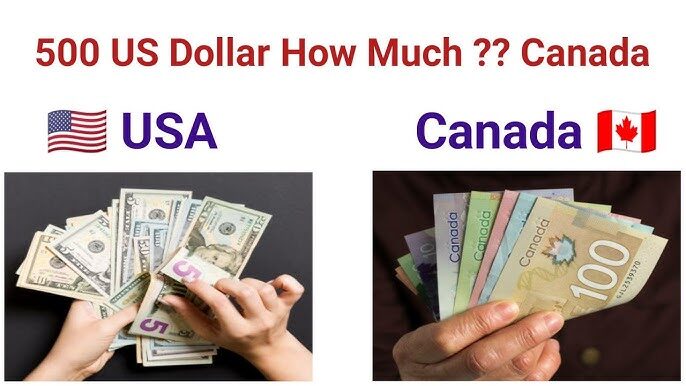The Canadian dollar has fallen to its lowest point in 21 years against the US dollar, with 1 US dollar now equal to 1.479 Canadian dollars. This marks the first time since April 2003 that the Canadian dollar has dropped this significantly. Economists predict further declines in the Canadian dollar as the U.S. government imposes a 25% tariff on Canadian exports.
The fall in the value of the Canadian dollar
The Canadian dollar’s decline is closely tied to the impact on Canada’s exports to the U.S., which make up roughly 20% of the country’s gross domestic product (GDP). According to BMO Capital Markets, a year-long tariff could slow Canada’s GDP growth to near zero in 2025, potentially causing a mild recession. Additionally, reduced demand for Canadian exports could lead to lower foreign currency inflows, further weakening the Canadian dollar.
Canada’s response with tariffs on U.S. imports, along with Prime Minister Justin Trudeau urging Canadians to avoid buying American-made goods, could lead to higher prices for many products. Tariffs tend to drive up costs and slow down economic growth. To help support the economy, BMO expects the Bank of Canada to cut interest rates more aggressively, potentially bringing them down to 1.5% from the current 3%. This move could further weaken the Canadian dollar. In fact, economists at Toronto Dominion predict the Canadian dollar could drop as low as US$0.65, down from US$0.685 as of February 3, 2025.
Investor thinking of dollar fallen
The economic outlook may seem bleak, and the currency market is currently bearish. However, there are always investment opportunities to be found, even in challenging times. For example, the declining Canadian dollar creates a two-fold opportunity for savvy investors.
TSX stocks that generate earnings in US dollars
The first opportunity lies in companies that earn revenue in US dollars but report their financials in Canadian dollars. These companies have solid operations in the U.S., and since they’re already doing business there, the impact of export tariffs is minimal for them.
Slate Grocery REIT
The REIT owns 116 properties across 23 U.S. states and earns 46% of its rental income from supermarkets and grocery stores, which tend to hold up well during economic downturns. It collects rent in U.S. dollars and pays dividends to Canadian investors in CAD.
Recently, the REIT’s unit price dropped by 2.6% due to the news of tariffs, creating a potential buying opportunity to secure an 8.8% yield.
The REIT pays dividends on a monthly basis. As the Canadian dollar continues to fall over the year, the foreign exchange conversion could boost the monthly distributions you receive. Slate Grocery REIT, with its focus on the stable grocery sector, offers a solid alternative investment and the potential for regular passive income during uncertain times.
Investing in Safe Haven Stocks: A Gold Opportunity
Another potential investment opportunity lies in gold, often seen as a safe haven during uncertain times. Gold has historically outperformed the market when there’s instability, and the tariffs on Canada and China are just the beginning. Even if the U.S. and Canada strike a trade deal, aggressive policies could still pose risks.
Typically, gold prices rise when the U.S. dollar weakens, but in this case, the dollar is strengthening. However, if the trade tensions escalate into a global trade war, central banks around the world may start accumulating more gold. This is where investing in Barrick Gold, Canada’s largest gold mining company, could be beneficial. Barrick reports its earnings in U.S. dollars, and if demand for gold increases, the price of gold could rise, allowing Barrick to sell its gold at higher prices.
you can also check the current mortgage rate on click in this.




